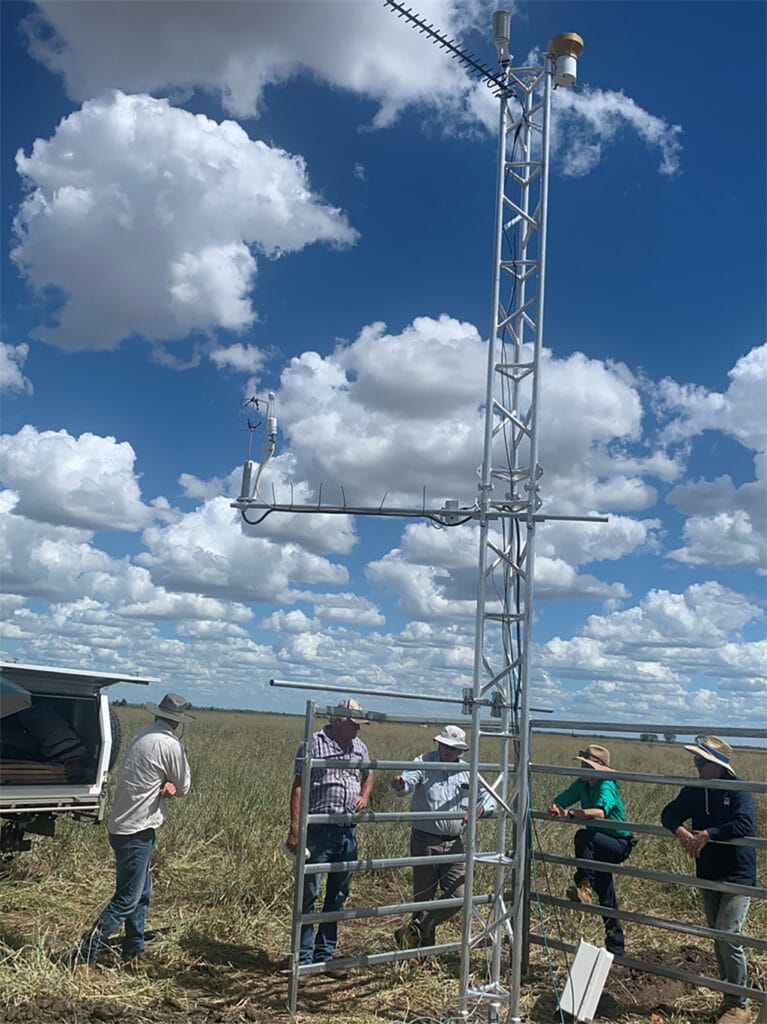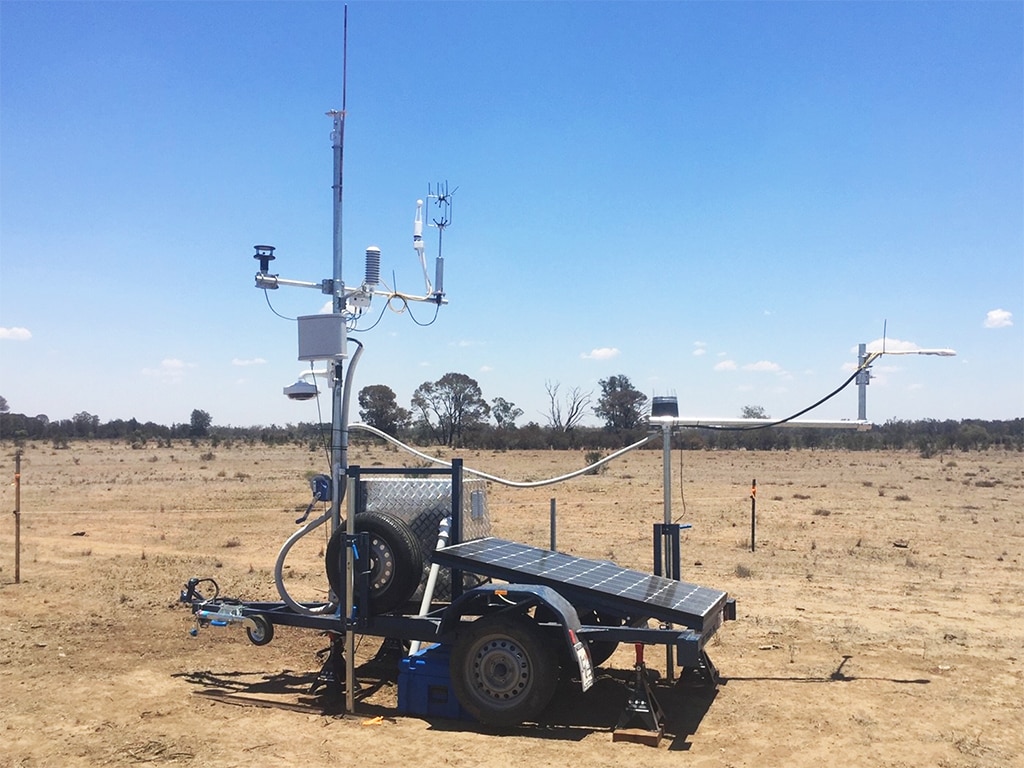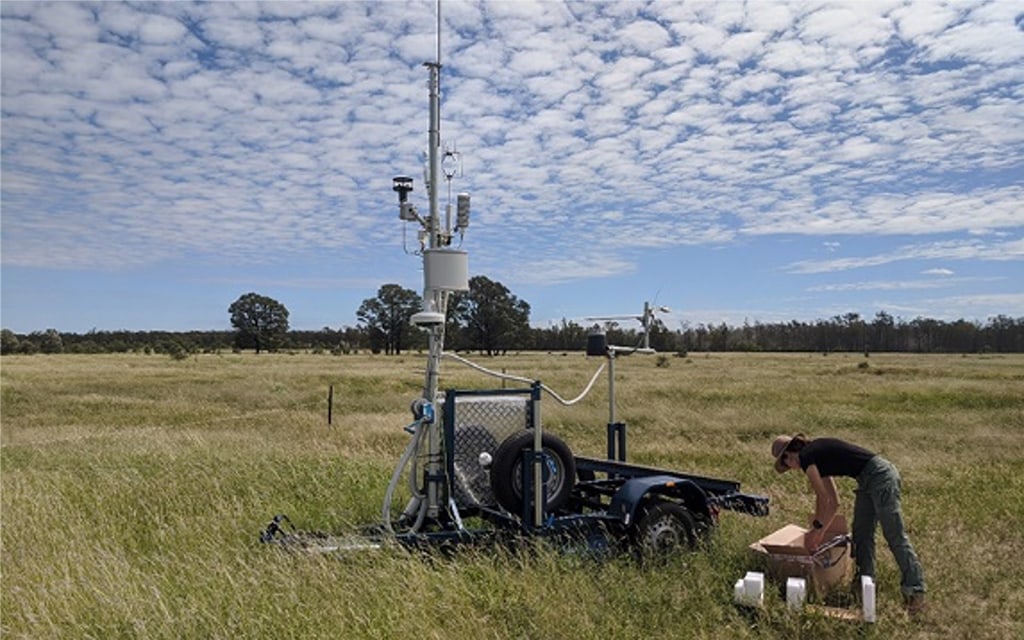The CO₂, water and energy data provided by TERN flux instruments provide a cost-effective alternative to expensive soil sampling for quantifying soil organic carbon sequestration at large spatial scales and ensuring delivery of carbon offsets.
TERN is working with the Queensland University of Technology (QUT), a consortium of major beef producers, seed companies, environmental consultants, government agencies and overseas environmental research universities to develop new methods of validating carbon sequestration models and increase soil carbon in grazing lands.
The QUT-led, Meat & Livestock Australia (MLA) funded project is based on an innovative use of carbon exchange monitoring using eddy-covariance flux towers to accurately assess changes in soil organic carbon on representative agricultural properties in northern New South Wales and southern Queensland. The project is led by Professor Peter Grace and Associate Professor David Rowlings of QUT:
“The way soil carbon has been traditionally measured globally is for a field scientist to go out and take multiple soil cores, and in an expansive country like Australia, that is very, very expensive.
“We know that the top 10 cm of soil in a landscape contains over 40% of the total soil organic carbon. So we’re utilising the autonomous monitoring technology of flux towers in combination with models to estimate changes in soil carbon across a wide-ranging area.”
Prof. Peter Grace, Queensland University of Technology

Flux towers provide a cost-effective alternative to expensive soil sampling for quantifying soil organic carbon sequestration at large spatial scales (credit: Peter Grace)
Utilising the eddy-covariance methods and data processing software developed by TERN-OzFlux, the Australian-New Zealand section of the international flux network FluxNet, the project is initially using 10 flux towers (including mobile units) at existing grazing trial sites.
The CO2, water and energy data provided by these comprehensive flux systems are used for calibrating and validating process-based simulation models to better understand the current levels of soil carbon and estimate how much could be accumulated by changing management practices.
Flux towers provide a cost-effective alternative to expensive soil sampling for quantifying soil organic carbon sequestration at large spatial scales.

Utilising the eddy-covariance methods and data processing software developed by TERN-OzFlux, the Australian-New Zealand section of the international flux network FluxNet, the project is initially using 10 flux towers, including mobile units (above), at existing grazing trial sites (credit: Peter Grace)
Increasing soil carbon for sustainable production and drought resilience
The amount of carbon that can be stored in soils is not limitless, but because of large losses in the past many Australian soils have the capacity for significant increases.
Increasing soil carbon requires the production of more above and below ground biomass. Management practices include the incorporation of pasture phases (in cropping systems), the addition of organic amendments such as manures, composts and leguminous crops and pasture species, grazing adjustments and revegetation. Increasing soil carbon has two main benefits.
First, by taking CO2 out of the atmosphere and accumulating small amounts of soil carbon over large areas, the emissions offset potential is huge.
And secondly, the more carbon you can get in soils, the better it is for soil health. Soils with higher soil carbon are more productive and sustainable, increasing resilience to climate variability and change.”
Prof. Peter Grace, Queensland University of Technology
Translation of national research infrastructure across sectors
11 years ago TERN, via its OzFlux research community, began operating an internationally recognised network of eddy covariance flux towers. These fully automated flux systems that monitor soil and plant CO2 exchange at sub-daily resolution were originally set up to understand natural ecosystems.
But, thanks to innovative thinking and flexible research infrastructure, TERN has been able to translate its capability into an entirely new domain, supporting agricultural industries to become more profitable and sustainable.
Buoyed by the success of the QUT-led project, TERN is currently investigating ways to expand the trial project into other parts of Australia. It is also looking into innovative ways to combine data from flux towers with the detailed soil moisture data collected via the TERN-enabled Australia-wide CosmOz network. This data has the potential to provide accurate, near-real-time information on soil function, soil carbon levels and sequestration capacity.
It’s an exciting space for TERN to be involved in, so be sure to keep an eye out for updates via our newsletter and socials.







